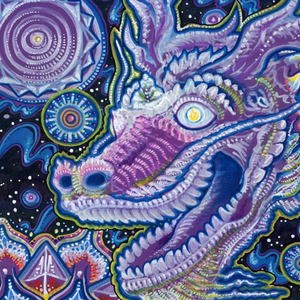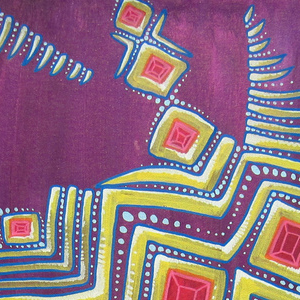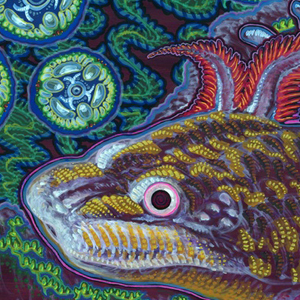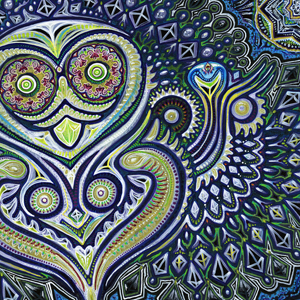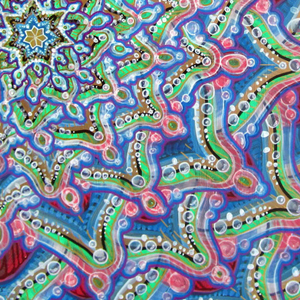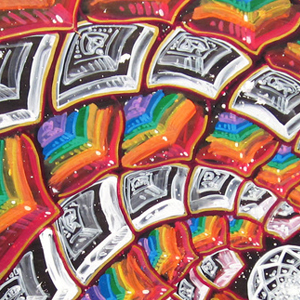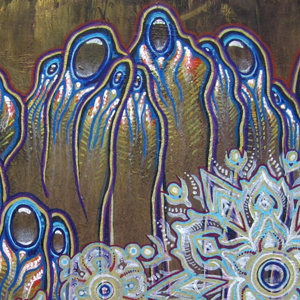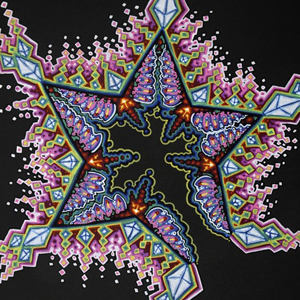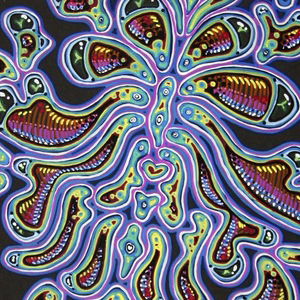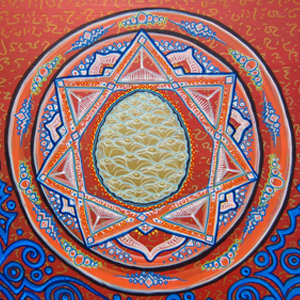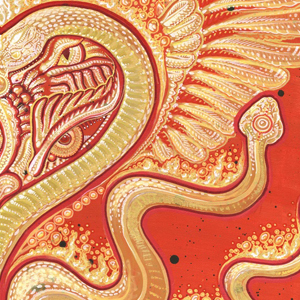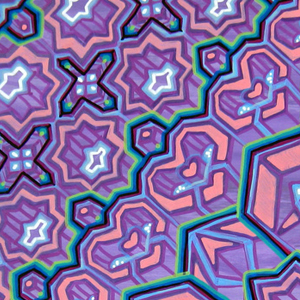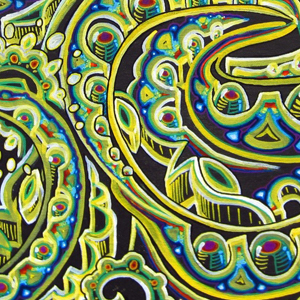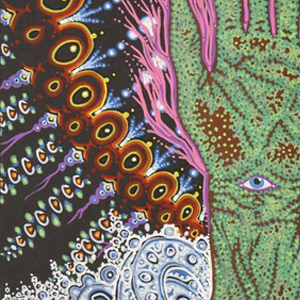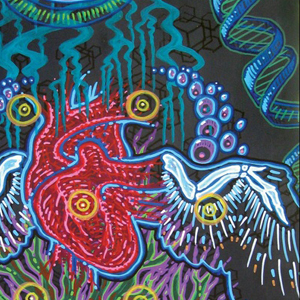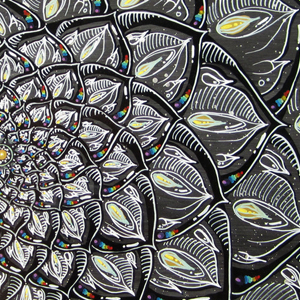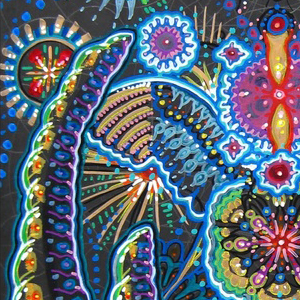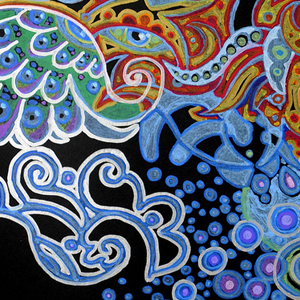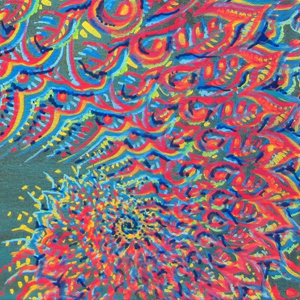|
Owing equal credit to scientific illustrator Ernst Haeckel and to Wassily Kandinsky, who may be history's first "live painter," my work lives at the intersection between noun and verb, science and art. Improvising paintings at concerts and music festivals makes me feel like part naturalist, describing new species of imaginal "nightlife;" and part interactive installation, making art from life and luring passersby into the process. I'm usually close enough to the speakers that a close examination reveals tiny waverings in my lines, like an oscilloscope, as the high-fidelity marker tips capture the subwoofer's sonic impact on my body. The paintings are in some sense trace fossils of their numberless influences (sonic, symbolic, intuitive). Emergent properties abound. I often learn through conversation that some piece is powerfully resonant with someone in the crowd – we both participate in the discovery, more than the declaration, of a piece's meaning. Permeability is key to a functioning cell membranes and inspired minds – and examining the constructed boundary between artist and audience is a big part of my work. The distinction between singular and plural, self and other appear more intimate and imbricated in the subtle domains, where each of us is also a multitude and participant in greater multitudes. In the liminal spaces of festival culture, self as city and city as self are both easier to see. In its "natural habitat," my work functions as a lens through which these inter-relationships – between people, media, and perspectives – become more obvious. Not merely the product of a relationship between me and the environment, each painting is subtly shaped as they happen by my interactions with other concertgoers, conversations that alter the outcome of the experiment. The pieces unfold in person, intended and experienced as works-in-progress for most of their life. These are recordings of a performance investigating the direct center of the AQAL mandala, and that performance is the primary work of art.
|
Michael Garfield | Shadows of Sound Sculpture
Michael Garfield’s paintings are informed by the esprit of scientific illustration, the energy of musical vibration, a fearless curiosity about subtle domains, and so much more – constituting an art of integral pictorial complexity that glows with radiant-color. He is an “illustrator” – or said better, a creative illuminator – of singular beings of the subtle domains whose modes of existence are sonorously vibrational. In the Renaissance, architecture in cases (as with the great Palladio) was organized via ratios proper to musical harmonies, such that seeing the building and dwelling within that structure was a kind of “hearing” of the harmony of that edifice and its spaces. In the early twentieth century, with the Renaissance view of painting and poetry as sister arts having falling away in the wake of artistic modernism, new inter-art comparisons emerged – as that of the analogy between abstract painting and music, exemplified in the work of Kandinsky. Garfield’s art deepens this exploration of the art of painting as a kind of visual music, attuning us to the subtle vibrational aspects that accompany gross sound via, through the folding of the multi-dimensional musical vibrations into the visual register of picturing. His art is seamlessly synesthetic: uniquely enacted across the gross and subtle domains. We see, feel — and hear — the presence of these mysterious and magical beings disclosed through inescapable works of integral art. Michael Schwartz |
|

